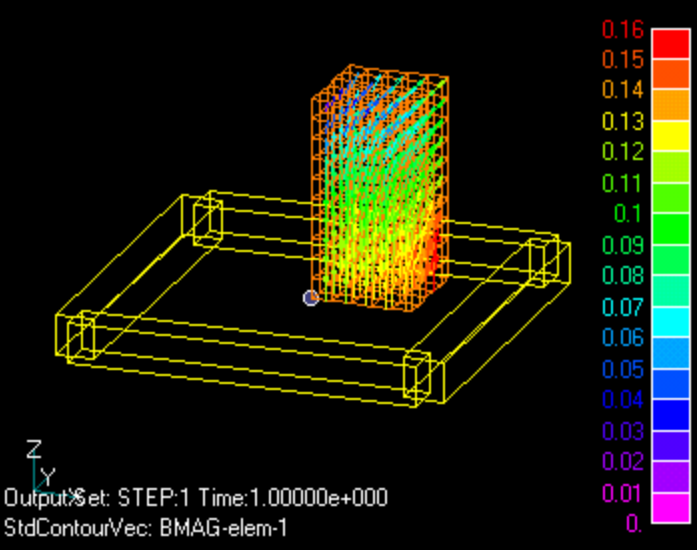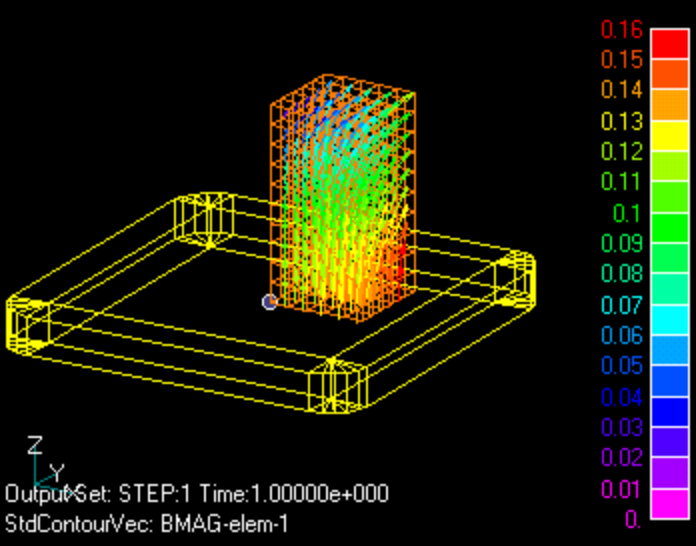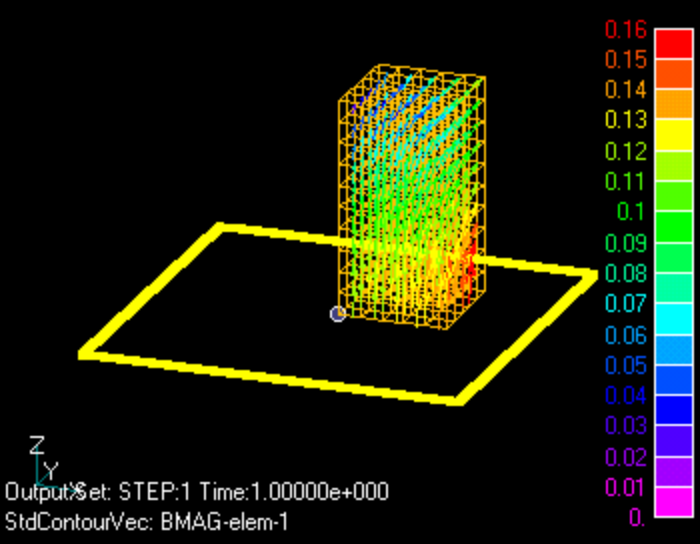Notes on the use of GCE (rectangular current element)
- TOP >
- Analysis Examples by Functions (List) >
- Notes on the use of GCE (rectangular current element)
Summary
EMSolution provides a rectangular current element GCE as one of the external current field sources, but connecting these elements to simulate a curved coil may cause problems because the current continuity condition is not satisfied. For example, if a square coil like the one shown in Fig. 1 is created using only GCE, the current will be discontinuous at the joints.
Explanation
Fig. 1 shows the result of the static magnetic field calculation (magnetic field distribution in the magnetic body) when there is a linear magnetic material (1/8 is shown) in the center, but the ICCG method converges only to about 10-3. Of course, current continuity will be satisfied and convergence will be better if connected by an ARC (arc element with rectangular cross section) as shown in Fig. 2.
It is desirable to simulate a coil using ARC as well, but it is quite time-consuming to create the data. Therefore, starting from r7.5, we have prepared a fine wire approximation for GCE and ARC. We will refer to these as FGCE and FARC, as they are line currents without cross sections. An example is shown in Fig. 3. Since FGCE can be created by simply connecting the points, data creation becomes easy. There is no problem with convergence of the ICCG method. Note, however, that the magnetic field becomes very large near the line current. The magnetic field is assumed to be zero on the line. Before r7.4, the same thing can be done with very small cross section dimensions to approximate the line current.
The rest of this page is for members only.
Analysis Examples by Functions
External current magnetic field source
- About the multi-potential method
- Definition of COIL (external current field source) by hexahedral element mesh
- Magnetic field distribution calculation in a COIL-only model
- Circuit calculation with COIL (external current field source) only
- COIL inductance and electromagnetic force calculations
- Inductance Calculation for COIL (external current magnetic field source)
- Handling of inductance in external current field source (COIL)
- About COIL Move
- Problems with external magnetic field current sources in the case of translational periodicity
- Notes on the use of GCE (rectangular current element)
©2020 Science Solutions International Laboratory, Inc.
All Rights reserved.





